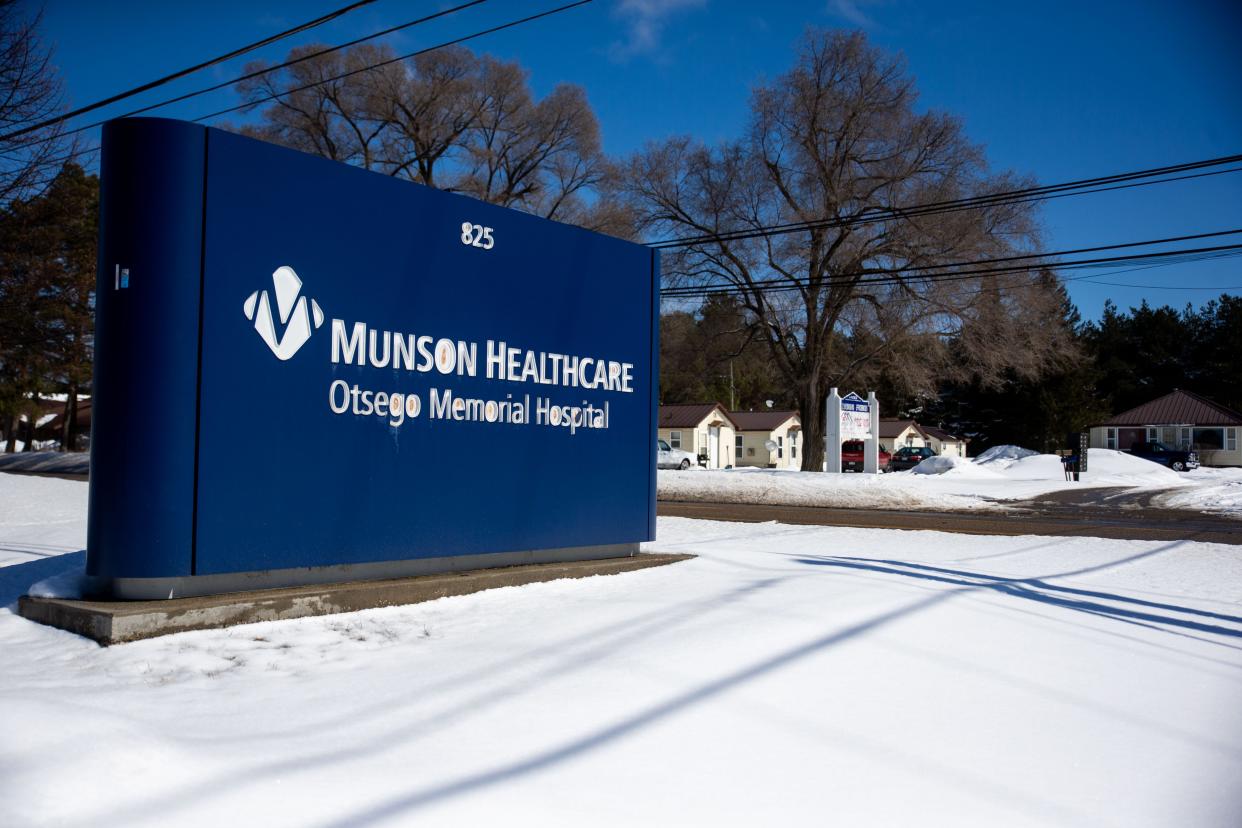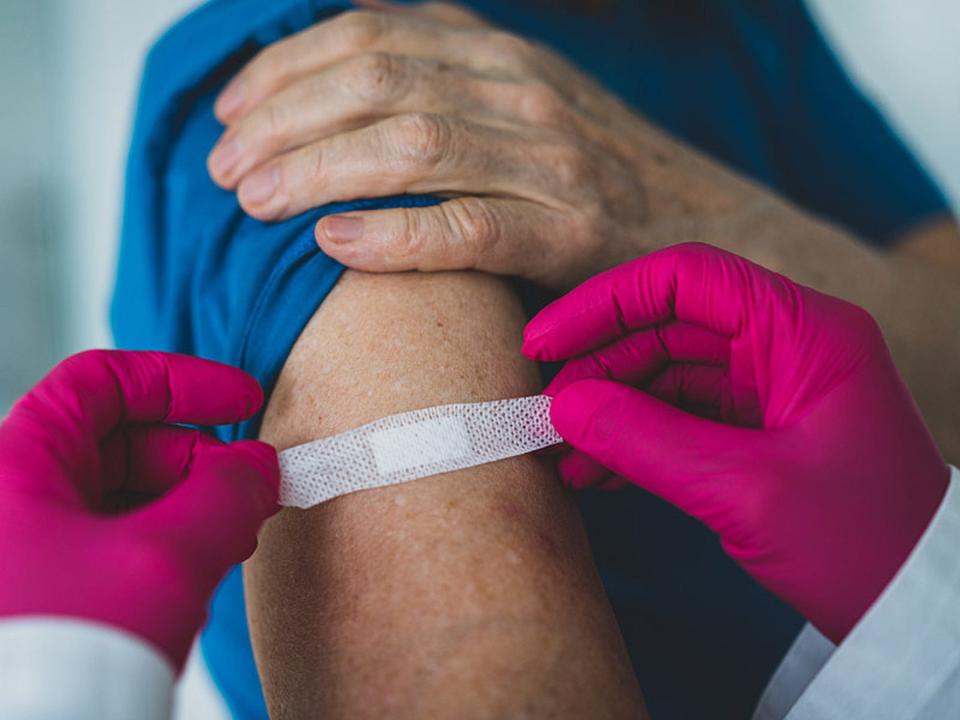Munson Healthcare updates community on COVID-19 impact, flu, RSV

- Oops!Something went wrong.Please try again later.
NORTHERN MICHIGAN — On Jan. 10, Munson Healthcare provided an update on the current impact of COVID-19, the flu and the respiratory syncytial virus (RSV) in a press conference broadcast over Zoom and Facebook.
Since the start of the pandemic, Northern Michigan has mostly lagged behind the rest of the state in rates of infection and deaths caused by COVID-19. Munson Chief Medical Officer Dr. Christine Nefcy shared data during the press conference showing that over the last two weeks, diagnostic tests showing positive results in Munson’s coverage area were at 18 percent, while the state was at approximately 13.4 percent.
“We've definitely, after the holidays, seen an uptick in our numbers. So that's really translating to a couple of things. We've got now several respiratory illnesses that are going on. One would be COVID and in addition, we're seeing RSV patients, typically pediatric patients that are hospitalized, and then we've got some influenza patients that are being hospitalized as well,” Nefcy said.
More:COVID-19 cases steady in northern Michigan as school year approaches
The last few weeks have shown an increase in flu activity in Northern Michigan as well. According to data provided during the press conference, Munson admitted 18 flu inpatients during the week of Dec. 18. That number spiked to 55 during the week of Jan. 1, reflecting the holiday season.
Across the U.S., flu activity remains relatively high. Michigan moved from high to moderate activity, but the majority of Northern Michigan is still seeing high rates of activity.
Nefcy said that COVID patients admitted to the hospital are mostly over 65 years old. Among that age group, 58 percent have not received a booster and more than 62 percent have not received the most recent bivalent booster.
Rates of flu vaccination vary by county, but only about 26 to 41 percent of the population in Munson’s coverage area have been vaccinated against the flu.
“In all of our Munson Healthcare systems, there's a range anywhere from a quarter of the population to under half the population. So, still not too late to get your flu booster and we would again, encourage everyone of all ages to get their flu vaccine for this year,” Nefcy said.
“If you are at high risk — very young or in our older population or you have other health care issues that put you at higher risk for developing complications from influenza, again, we would strongly encourage you to go get your flu shot.”
Subscribe: Check out our offers and read the local news that matters to you
COVID-19 variants
Dr. Christopher Ledtke, an infectious disease consultant with Munson Healthcare, reminded residents that the COVID-19 pandemic is still ongoing, despite a relative return to normal for most people.
“We're still losing about 500 Americans every day from COVID-19. Almost all of which are 65 and older, which remains the highest risk group,” he said.
Ledtke viewed the COVID-19 variants that emerged after the initial rise of the virus, most notably the omicron variant, which saw a large surge last year.
“So, you may have noticed that for years we were calling all new COVID variants of concern by a specific Greek letter, think alpha, delta and omicron,” Ledtke said. “We then saw this massive omicron wave last winter and since then new emerging variants have been called by a series of letters and numbers. This is because, since the emergence of omicron, all these new variants have technically been sub-variants or offshoots of omicron.”
According to Ledtke, new sub-variants have continued to emerge and become dominant every few months. Currently, the dominant sub-variant in the Midwest is still the BQ Omicron subvariants. However, XBB.1.5 is increasing rapidly, making up 7.3 percent of all reported cases during the week of Jan. 7 in Region 5, which encompasses Michigan, Illinois, Indiana, Minnesota, Ohio and Wisconsin.
Ledtke said this variant is likely more transmissible and more able to activate the immune system, so Munson is expecting XBB.1.5 to increase in dominance over the next month. In other areas of the world, like in Singapore in late 2022, the variant led to an increase in the number of cases, but not in hospitalizations.
It is possible to contract multiple viruses at once, Ledtke said. It can be COVID-19, flu and RSV all at once or two viruses at a time.
During a Q&A portion of the conference, Ledtke said that the COVID-19 subvariants are not likely to cause a massive wave of cases that was seen with the omicron event. The sub-variants tend to make smaller waves that are still noticeable but less severe.
More:Wastewater testing indicates that a surge in Covid cases may be coming

Ledtke urges everyone who can to stay up-to-date with vaccine boosters. The most recent booster was distributed in September and the CDC recommends patients get a booster at least two months after their last shot.
“So, if you have not received a COVID-19 booster since September, it is time to get one. Getting appropriate treatment if you meet criteria is also important,” Ledtke said. “And again, please discuss with your primary care physician to see if you meet criteria. Consider masking and high risk situations, particularly crowded indoor settings, especially if you are at risk for severe disease.”
COVID-19 treatment options continue to be limited. Paxlovid is the preferred oral therapy for high-risk patients like those who are elderly, overweight, pregnant, diabetic or have heart disease. It is free and available at local pharmacies.
An alternative treatment, Remdesivir, is only available in hospitals as it requires three days of consistent IV infusion.
Where to go for care
Vice President and Chief Nursing Officer of Ambulatory Services Bonnie Kruszka presented information on where to go when symptoms of COVID-19, flu or RSV arise.
According to Kruszka, cases of all three viruses have increased when compared to last year. In Munson urgent cares, there was a 17.5 percent increase from November to December and that trend appears to be continuing into January, leading to longer wait times.
For most children and adults, symptoms can be managed at home using over-the-counter medications like acetaminophen and ibuprofen, drinking fluids like water and broth, and getting rest.
In cases that are not life-threatening but still need additional care, Kruszka suggests primary care physicians as the first stop. When a primary care physician is unavailable and non-life-threatening care is needed, Kruszka said that is the time to visit walk-in clinics or urgent care, which are open in the evening and during weekends.
Kruszka also recommended Munson’s virtual urgent care, which can treat non-life-threatening illness and injury for patients three and older. Also available to patients is the Munson Ask-A-Nurse line. Patients can call (231) 935-0951 to speak to a nurse about a health concern or advice on where to go to receive care.
— Contact reporter Tess Ware at tware@petoskeynews.com. Follow her on Twitter, @Tess_Petoskey
This article originally appeared on The Petoskey News-Review: Munson Healthcare updates community on COVID-19 impact, flu, RSV

